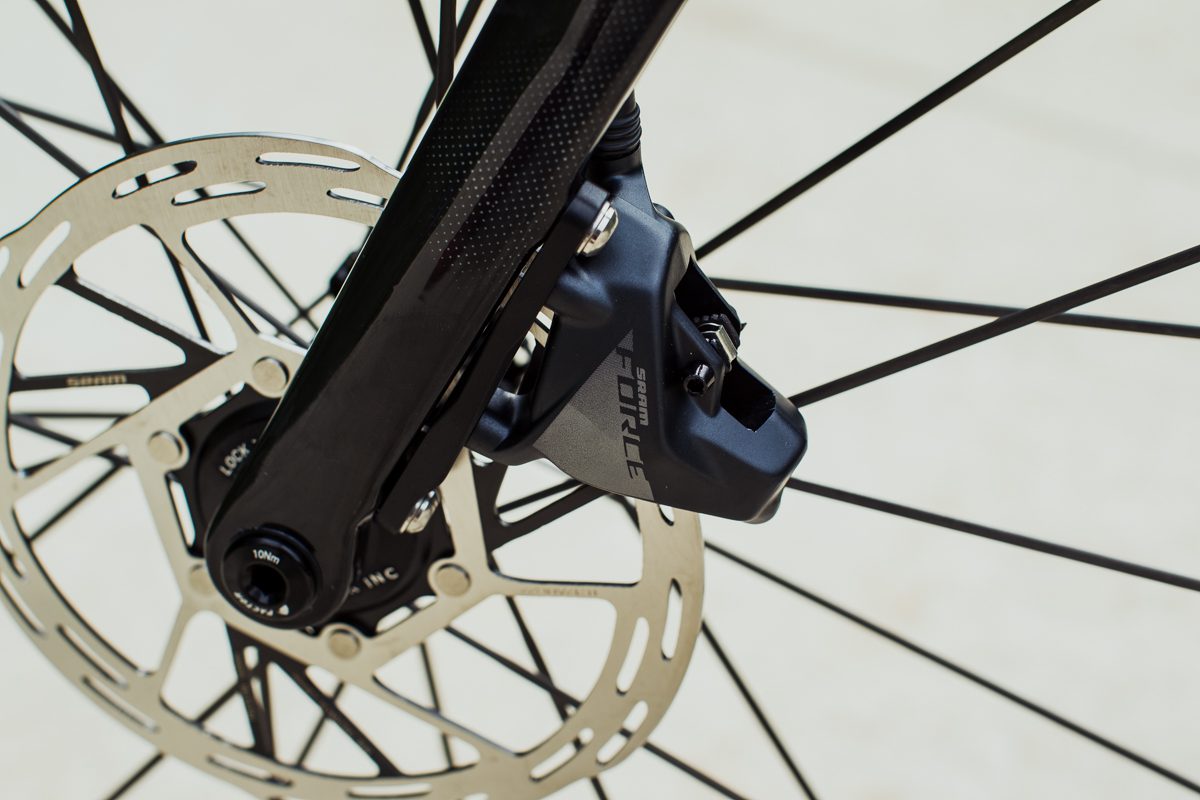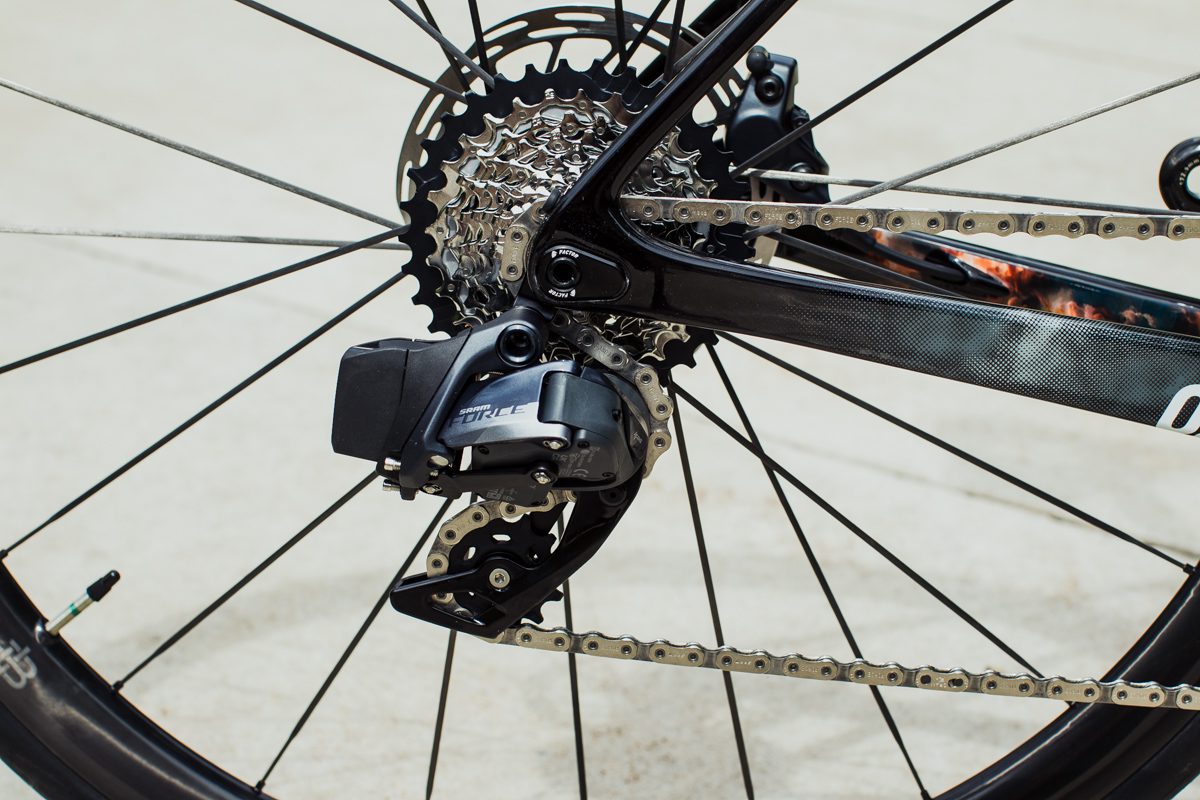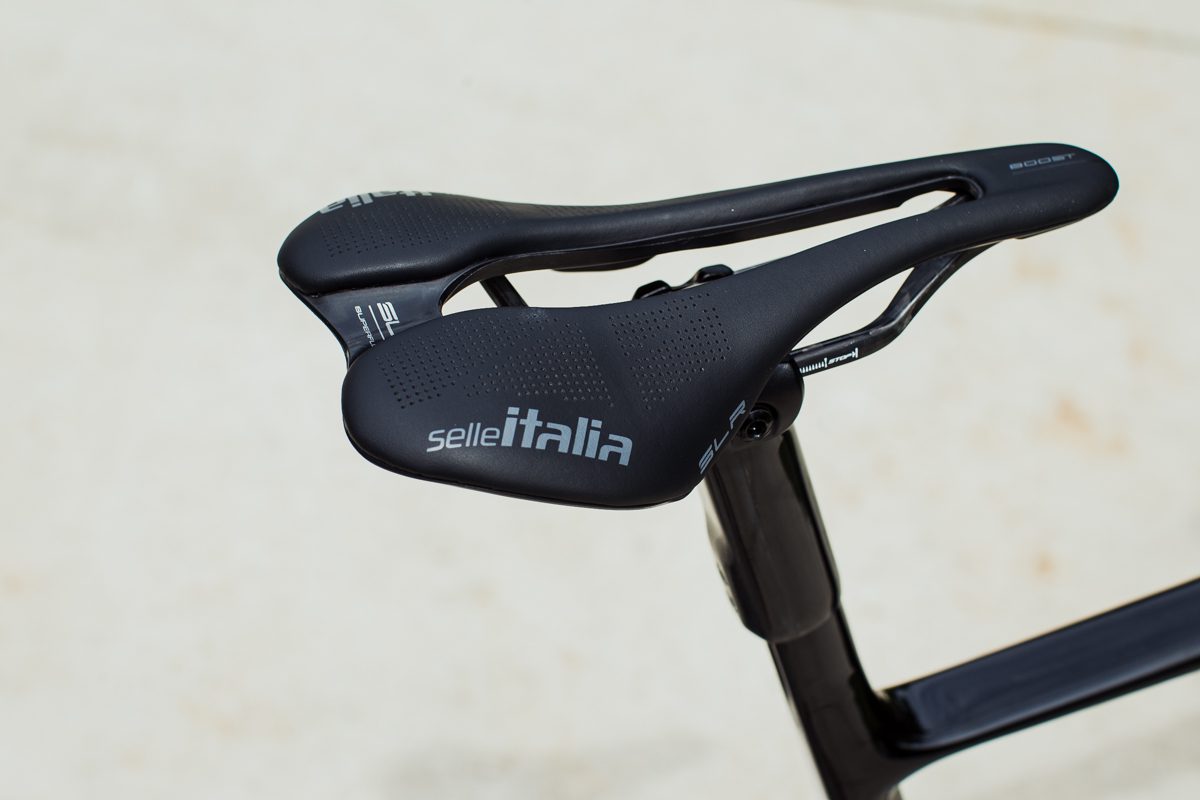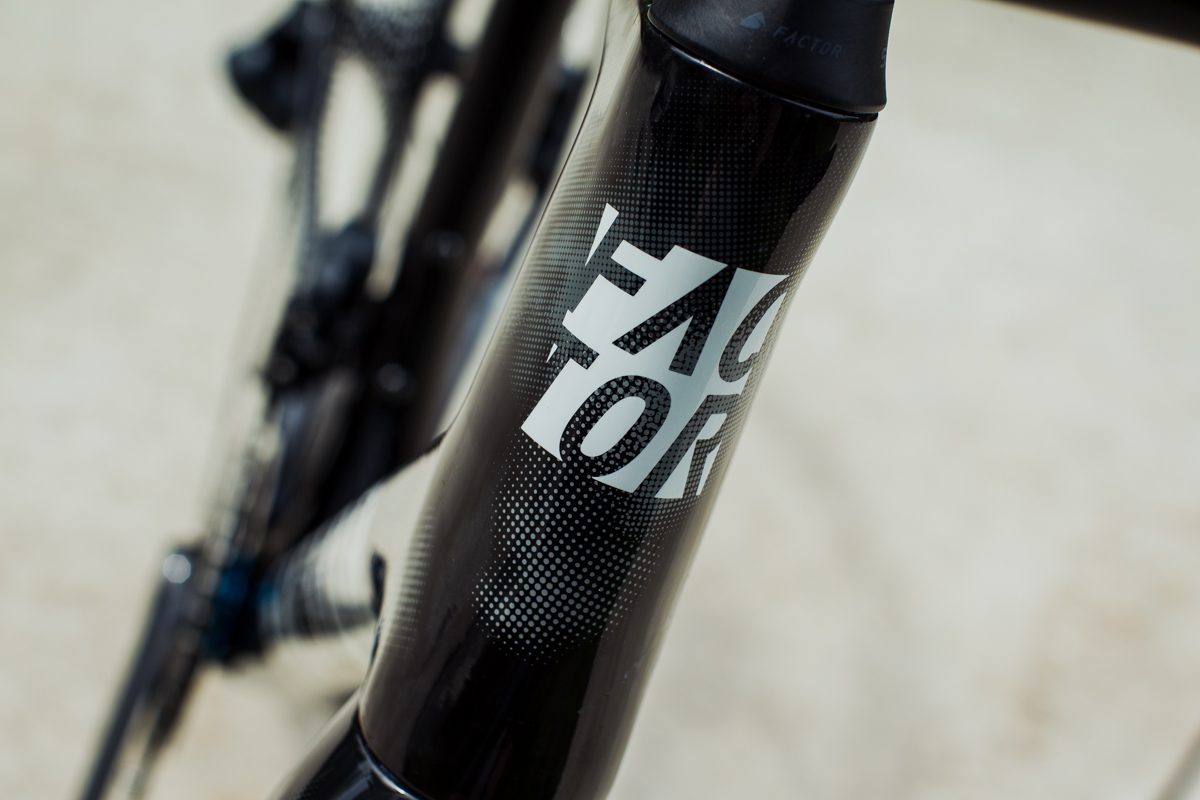The new Factor O2 VAM first look and ride impressions
A climber’s bike with aerodynamics for the inclines
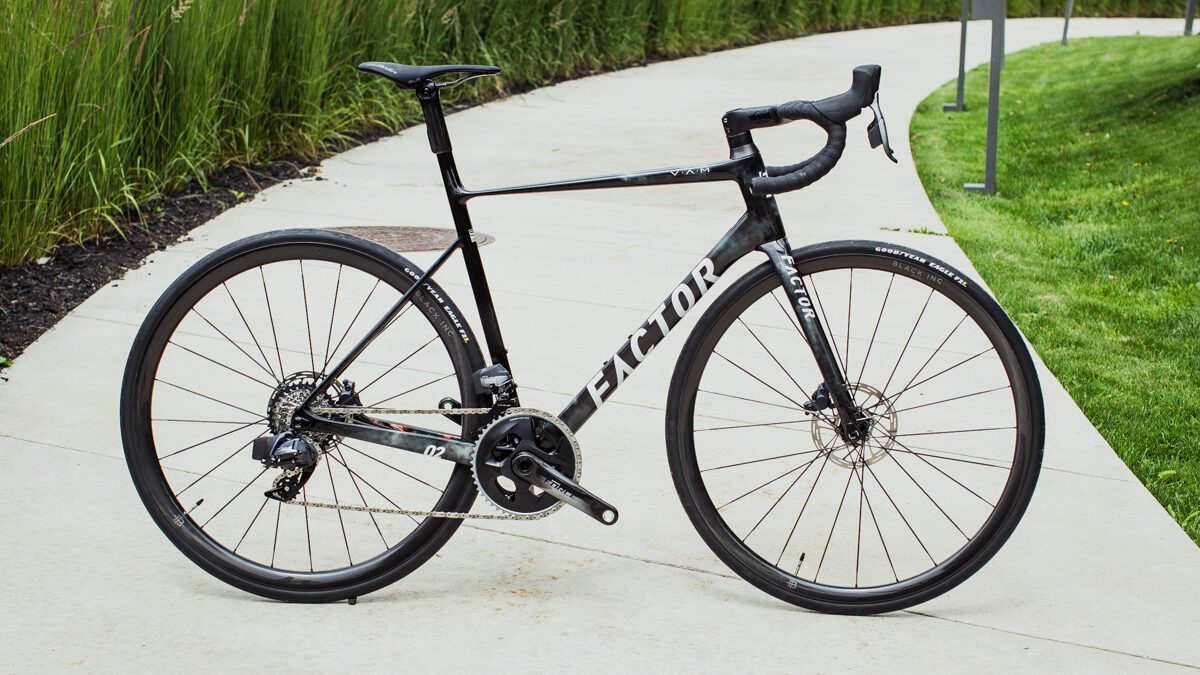 Photo by:
Matt Stetson
Photo by:
Matt Stetson
Factor Bikes founder and CEO Rob Gitelis had a challenge for his director of engineering. “When I was first speaking to Graham,” Gitelis says, “I gave him a goal: you have 700 g, what’s the most aero frame you can make?” Graham Shrive, who’s based in Orangeville, Ont., knows bike frames. He worked at Cervélo’s Toronto office for more than seven years and had a hand in the design of many of that company’s bikes. Since late 2019, he’s been at Factor Bikes. At Shrive’s disposal, he had all the computing essentials that go into the making of a modern super bike: finite element analysis and computational fluid dynamics. He also worked with Dylan Teuns of Israel-Premier Tech and further analyzed frame models at the RWDI wind tunnel in Guelph, Ont.
His challenge is one that many bike brands have taken up: make a light and aero climbing bike. It’s the aero-ification of the climber’s bike that has been happening for the past few years. In 2020, Giant, Trek and Specialized all made their lightweight frames slipperier in the wind. In 2021, Shrive’s old company aero’d up its R5.
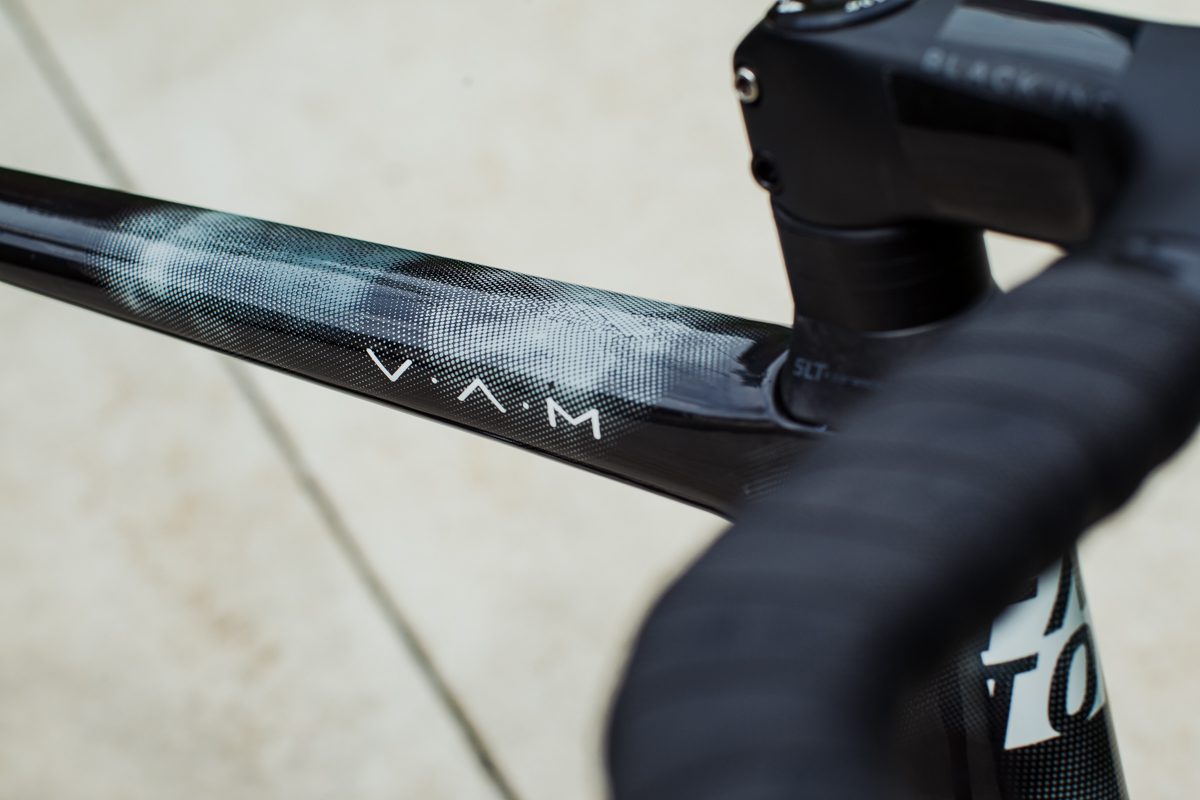
At Factor, the boundaries between a pure climber’s bike and an aero bike aren’t always so distinct. The Ostro VAM is the aero frame, however, it’s not a stretch to build it up to the UCI’s 6.8 kg weight minimum. In fact, according to Gitelis, many riders on IPT would opt for the Ostro in most cases, instead of the wicked light O2. Michael Woods won Stage 9 of the 2023 Tour de France atop the Puy de Dôme on the Ostro. Aerodynamics were winning out.
With a new aero climber’s bike, the frame couldn’t just be aero at the speeds pros hit on flat ground. Don’t you love seeing how some bikes are great at 50 km/h, a speed you, a non-pro, only hit on a downhill? But a pro’s climbing speed might be comparable to your cruising speed. (According to Woods’s Strava post, he averaged 19.9 km/h on the Puy de Dôme.) Shrive had to explore tube shapes that would work at a climber’s velocity. (Turns out, that could be a boon for you, too.)
At the heart of Gitelis’s challenge is the traditional incompatibilities between aerodynamic shapes and lightweight shapes. A truncated airfoil tube needs more material than a round one. So, the more aero the frame got, the more mass it put on as well. Now, as production techniques with carbon fibre have improved, all bike brands have been able to lighten up their aero bikes. Still, while it may be easier to build a lightweight aero bike now than it was a few years ago, it’s still a balancing act. Or, as Shrive puts it: “It’s quite a challenging process. And, it’s not as exact as you might think. Instead of getting a perfect answer, you’re trying to get the most optimized answer.”

And what of Gitelis’s challenge? “Graham came back to me with a 730 g frame,” Gitelis says, “but it included a seatpost. So I think we really met that goal with the new O2 VAM.”
Aero, light and stiff—The Factor O2 VAM is all three
So, the bike is light, but how aero is it? At yaw angles from zero to 15, the new Factor O2 VAM generally sits between the old O2 VAM and the Ostro: it’s more aero than the former, but not as sleek as the latter. As for aerodynamics at various speeds, the new O2 VAM and the Ostro are close at higher velocities. At lower speeds, 20 to 30 km/h, some of the tubes on the O2 VAM perform better than those of the Ostro’s. “So with the average rider, we really see a lot more gains in that 2.5 to three per cent grade range that they wouldn’t normally see if they were riding just a pure aero road bike,” Gitelis says.
While the Ostro is still more aerodynamic than the O2 VAM, the two frames are pretty much equally stiff. At the bottom bracket, stiffness gives you your pedalling efficiency, the surge you feel as you spin the cranks. There’s also the frame’s torsional stiffness. “That’s the ability of the front and rear wheel to stay in plane when you’re descending or cornering really hard,” Shrive says. “What you find on a bike with low torsional stiffness is that when you set up for a corner and you initiate the cornering action, the bike kind of comes unwound so you tend to understeer. Then you hit the brakes and likely corner slower in the future.”
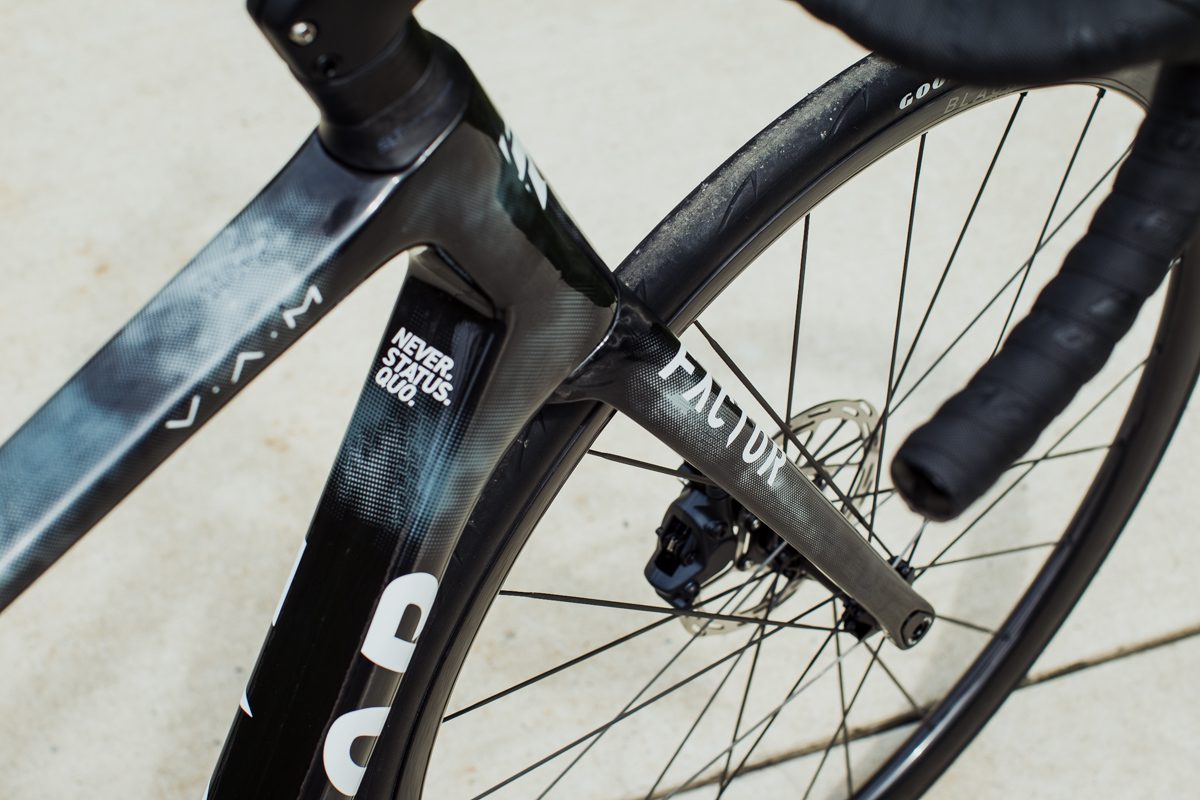
Shrive says the stiffness figures are within five per cent between the two frames. To put that into context, he adds, “There’s plus or minus five per cent in every process—we’re measuring a few per cent of a millimetre difference. The measuring stick I always use is a sensitive pro who can detect below five per cent differences. Mark Cavendish, for example, can feel if you have a bike that’s two or three per cent less stiff than another one. Less sensitive pros notice around 10 per cent and below.”
What’s with the integrated seatpost on the Factor O2 VAM?
An integrated or external seatpost is a lot like an extension of the seat post above the top tube. You’ve seen that design on Giant’s top-end TCR Advanced SL for years. It, of course, helps to keep the weight down. There’s no clamp or wedge required. Shrive notes that with the Factor O2 VAM, the seatpost could get wall thickness of 0.6 mm in certain places. (It’s about 2.2-mm thick where the seat mast clamps to the post.) If the bike had had a 27.2-mm-diameter seatpost, the seat tube would have needed more material.

As Shrive tinkered with tube shapes, he had one design above the top tube for the seatpost and another below the top tube for the seat tube. But then he ran into a problem: a Shimano Di2 battery would be unable to fit. Not to worry though. The shapes of this production model of the Factor O2 VAM can accommodate the cell that powers Shimano’s top groupsets.
The Factor O2 VAM’s shape-shifting top tube
The top tube is at its widest where it meets the head tube. The almost-horizontal section has a rectangular shape that narrows as it gets to the seat tube. The top tube is almost flat at the back. Shrive says the top tube needs to be wider near the head tube to manage the torsional forces at that part of the frame. “On top tube, the torsional loads dissipate by about a third of the way through the tube,” Shrive says. “Then they become almost exclusively bending loads as you go farther toward the seatpost. The bending load is left and right. We want the tube to take a strong bending load, side to side.”

No floppy handling, no matter the size
Shrive works hard to combat wheel flop. I remember him mentioning the steps he took to address it on Cervélo’s C5 as well as the Áspero, which is designed to run 700c or 650b wheels. Remember, wheel flop occurs when gravity affects the front hoop at low speed turns, such as those on a climb, pulling it downward. A shallow head-tube angle can lead to flop. The size 54 O2 VAM frame I’m testing has a head-tube angle of 72.5 degrees, as does the size 52. The small frames, 45 and 49, have angles of 71.1 and 71.7 degrees, respectively. Sizes 56, 58 and 61 have head-tube angles of 73.5 degrees. All frames have a trail figure of 57 mm. To get that consistent number, there are four forks in use, offering different offsets. The size 45 frame has its own fork with 57-mm offset. The fork on the size 49 has a 53-mm offset. Both the 52 and 54 have a 48-mm-offset fork. The rest sport forks with 43-mm of offset. “That represents a real commitment to smaller riders,” Shrive says. “We’re trying to give an equitable handling experience to all rider sizes. So, if you’re on a small bike, it doesn’t mean that it should handle like a truck.”
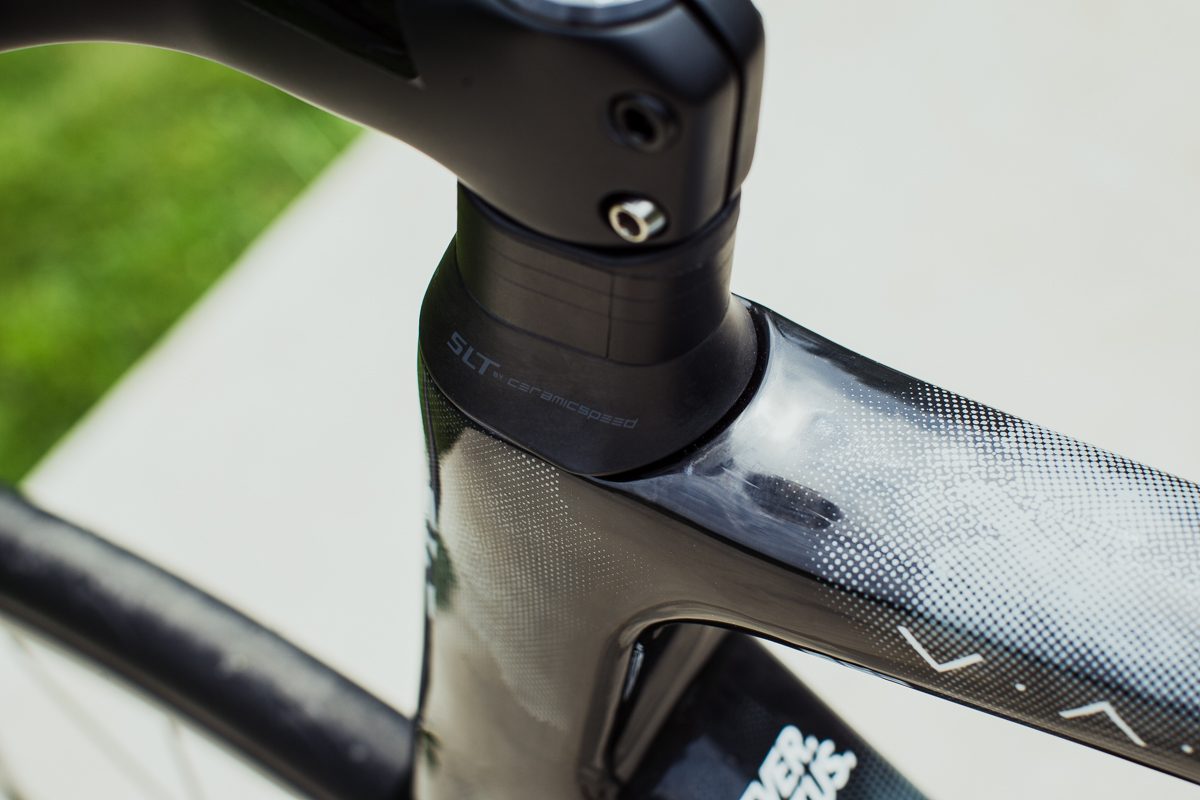
New Black Inc. 28/33 wheels
Black Inc. is Factor’s component brand, which makes wheels, bars and seatposts. The O2 VAM comes spec’d with a Black Inc. integrated bar/stem and new 28/33 wheels. The numbers refer to rim depth, with the front wheel at 28 mm and the rear at 33 mm. You’ve also seen a similar mix of depths on the most recent Specialized Tarmac and Cervélo S5, each with its own set of house-brand hoops.
Another feature of the Black Inc. wheels that is on trend are the U-shaped (as opposed to V-shaped) rim profiles. “This allows us to have the onset of a stall, or when the wheel loses lift, be much more gentle,” Shrive says. The stall, which you notice on some deep aero wheels, can lead to a bit of a wobble. The U-shaped profiles keep that wobble at bay. Also, their relatively shallow depths make them less susceptible to getting shoved in a crosswind.
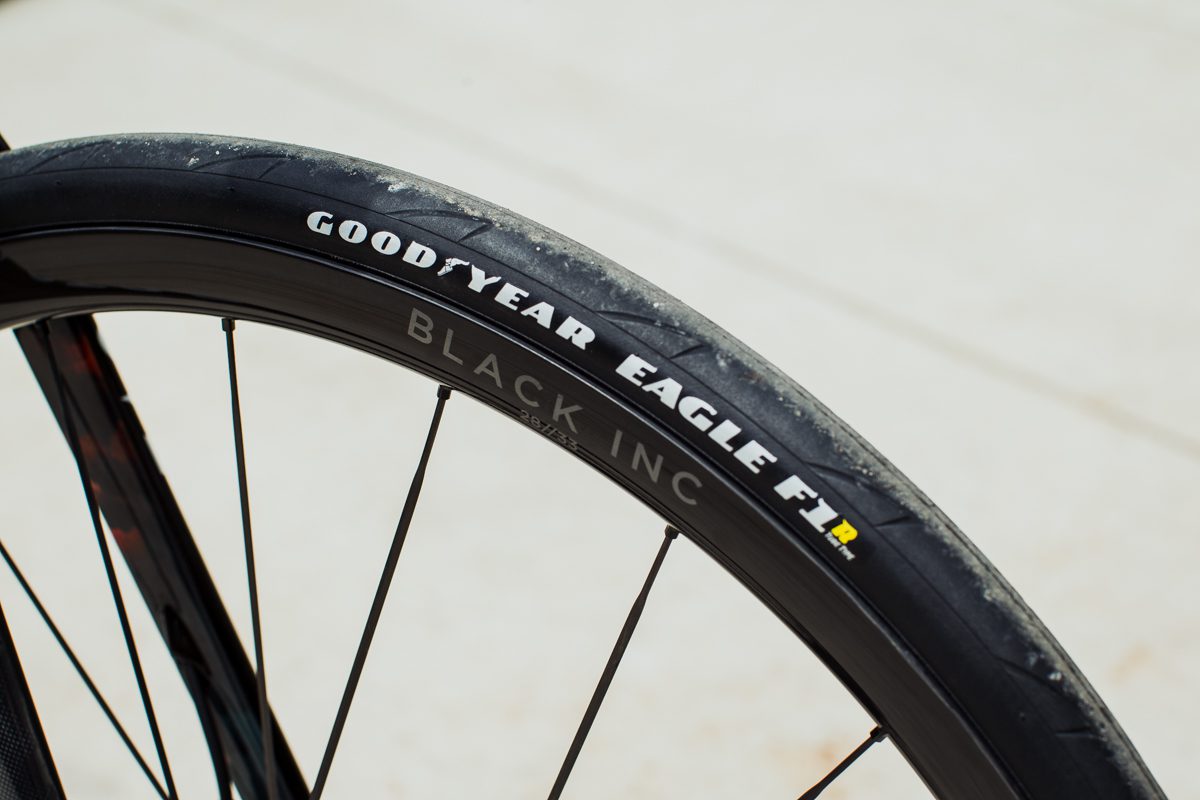
Also on trend: a wider inner rim width. Black Inc. wheels tend to have a 21-mm inner rim width. The new 28/33 wheels are 23 mm hook to hook. And yes, there are hooks. Black Inc. isn’t ready to go hookless. The company says the wheels weigh in at 1,146 g. They are optimized for 28c tires. My test bike came with 28c Goodyear Eagle F1 R treads that measured out to 29 mm on the rims. The frame and fork has space for 32-mm-wide tires (actual width, not nominal) with about 4 mm of clearance around each. The Black Inc. freehub is loud. Like, really loud.
First ride impressions of the Factor O2 VAM
I’ve had the Factor O2 VAM out on a few rides pre-launch. While it was in the workstand, I learned I didn’t like that loud freehub. Later, the thing made it hard to sneak out of my condo on an early morning ride without alerting my family. Decibels aside, the wheels are fast and smooth, quite the pleasure to spin up.
The bike’s handling is sharp and fast. At first, I thought it might be a bit too edge, however, once I took it into some fast corners, I was impressed. I could corner with confidence, even with minor corrections, in wicked turns.
The frame stiffness is also exceptional. I’m not as sensitive as Cavendish in my ability to discern a three per cent difference in stiffness (maybe if I could put out as many top-end watts as the sprinter), but every one of my pedal strokes seemed to convert into lively forward momentum.
The small-parts kit that comes with the bike is well thought out. An integrated aero bar and stem is great, except when you have trouble sourcing mounts for your accessories. The Black Inc. mount sits nicely beneath the stem and holds my Garmin head unit and light.

My test bike is outfitted with a SRAM Force eTap AXS drivetrain. The whole setup tips my scale at just a little more than the UCI minimum: 6.81 kg. With my Garmin pedals, head unit/light mount, cages and light it’s 7.42 kg.
I find the engineering story behind the top tube with its flat section near the seat tube compelling. Esthetically, I’m still unsure. A colleague of mine is not a fan. My hunch is that the look is not so dramatic that it will age poorly, but it will likely be a marker of a certain time, a particular way of thinking by an engineer juggling new variables. (I should note that the appearance of this top tube’s shape is also the result of a change in UCI design rules.)
There aren’t really any features in the frame aimed at boosting rider comfort. The seatstays and seat tube do dissipate some road vibrations, but Shrive is interested in creating a bike that puts you more in touch with the road, not insulating you from it. On my rides, I didn’t find the bike too harsh. The Factor O2 VAM is for performance above all else. You can feel it—on the descents, the flats, and definitely on the climbs.
The Canadian prices of the new Factor O2 VAM
Factor O2 VAM build Canadian price
| Factor O2 VAM build | Canadian price |
|---|---|
| Shimano Dura-Ace 9200 Di2 | $16,000 |
| Shimano Ultegra 8100 Di2 | $13,300 |
| SRAM Red eTap AXS with power meter | $16,400 |
| SRAM Red eTap AXS | $16,000 |
| SRAM Force eTap AXS with power meter | $13,600 |
| SRAM Force eTap AXS | $13,300 |
| Frameset | $8,500 |
| Frameset with Black Inc. 28/33 wheels | $12,000 |
